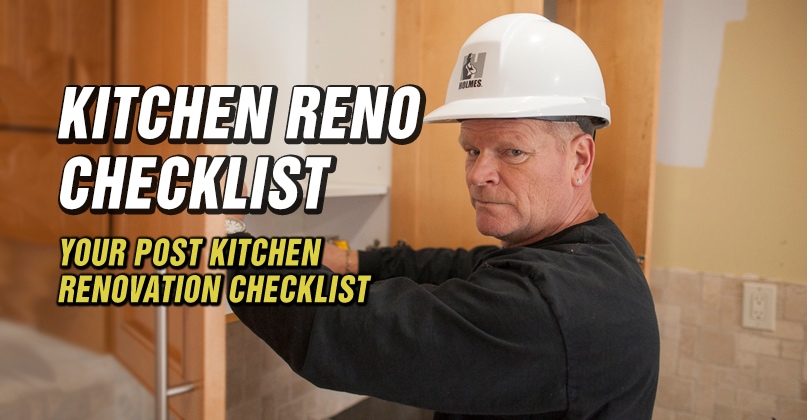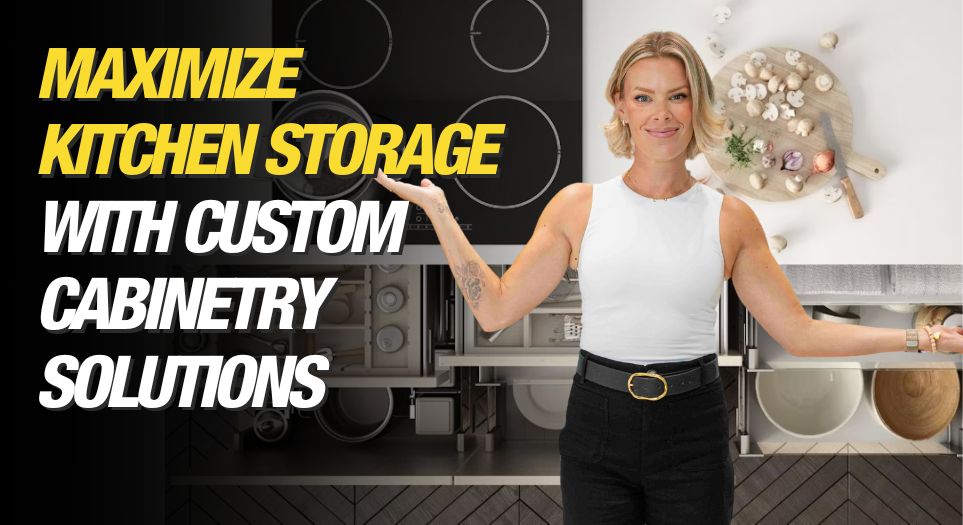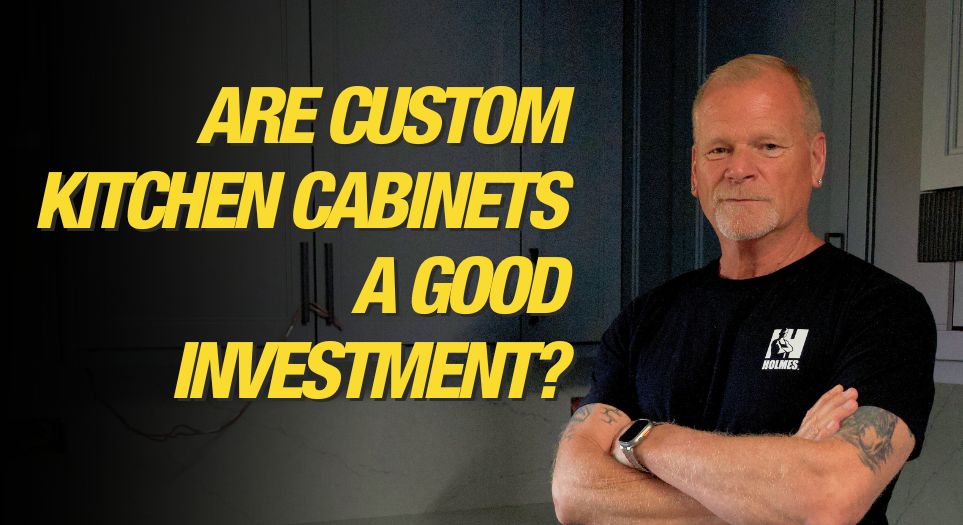If you’ve watched me over the years, you know I’m big on one thing: doing it right. That doesn’t just apply to how you build or renovate a home...
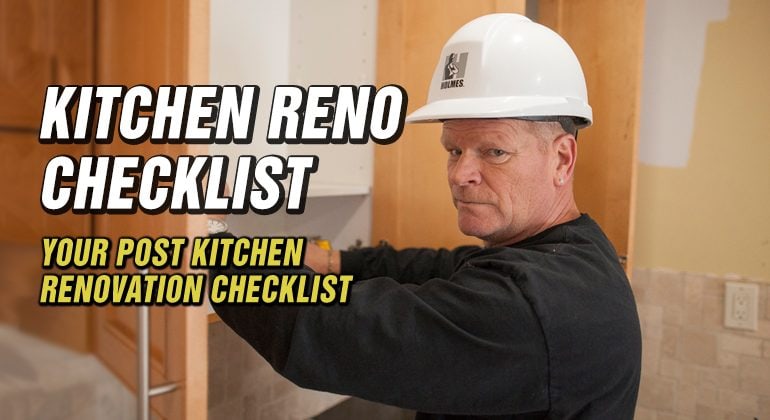
Your Post Kitchen Renovation Checklist
By Mike Holmes
Mike’s Advice / Kitchen Renovation
Wednesday, July 17th, 2019 @ 9:39am
Great news! Your contractor just declared that your kitchen renovation is complete, in full operating mode and ready to be used. You’re excited and can’t wait to start cooking up a storm in your new kitchen. Wait, STOP right there! Before you pay the remaining balance owed and you start taking all the pots and pans out of storage, you still need to do a thorough walk-through with your contractor.
Here are some important tips for your post- renovation that you should add to your checklist when inspecting your newly renovated kitchen.
 CABINETS – Doors and Drawers
CABINETS – Doors and Drawers
Start with the cabinetry; don’t be afraid to get an up-close look at each cabinet – upper and lower cabinets. They should be straight, level, and properly anchored to the wall. They should all line up evenly with one another as well as the appliances. When inspecting your kitchen cabinets, keep an eye out for any gaps between them and the walls and the ceiling – you shouldn’t see gaps!
Open all the cabinet doors and drawers all the way. Make sure nothing is in the way and they are able to open fully and close without any problems. The doors and drawers in your kitchen should not rub up against or bump one another or any of the appliances nearby. Also be sure to check for any swelling or warping, which is often a result of moisture, defects or damage.
Not only should the cabinet doors and drawers open and close easily, but you should also make sure that all drawers remain on the tracks installed. Inspect all cabinet hardware to ensure that they are all securely fastened and working properly.

ELECTRICAL
Take a look at all the electrical outlets; are they at least 6 feet away from the kitchen sink and GFCI protected? They should be! If they are less than 6 feet from the kitchen sink, they are too close and this is a big concern, as it becomes a safety issue that your contractor will need to fix in order to provide you with a safe kitchen.
DID YOU KNOW?
Not every outlet within 6 feet of the kitchen sink needs a GFCI device because all outlets wired downstream of the GFCI receptacle are protected by the upstream device.

LIGHT FIXTURES
If your general contractor had light fixtures installed in your kitchen, check that they work. There should be no visible wires and the canopy, which is a plate that covers the electrical box.

COUNTERTOP
Inspect the countertop not only with your eyes but also run your hand over it to feel for any gouges, deep scraps or scratches, or any other noticeable defects. Be sure that there are no visible gaps at the seams and that all seams are minimized and line up properly.
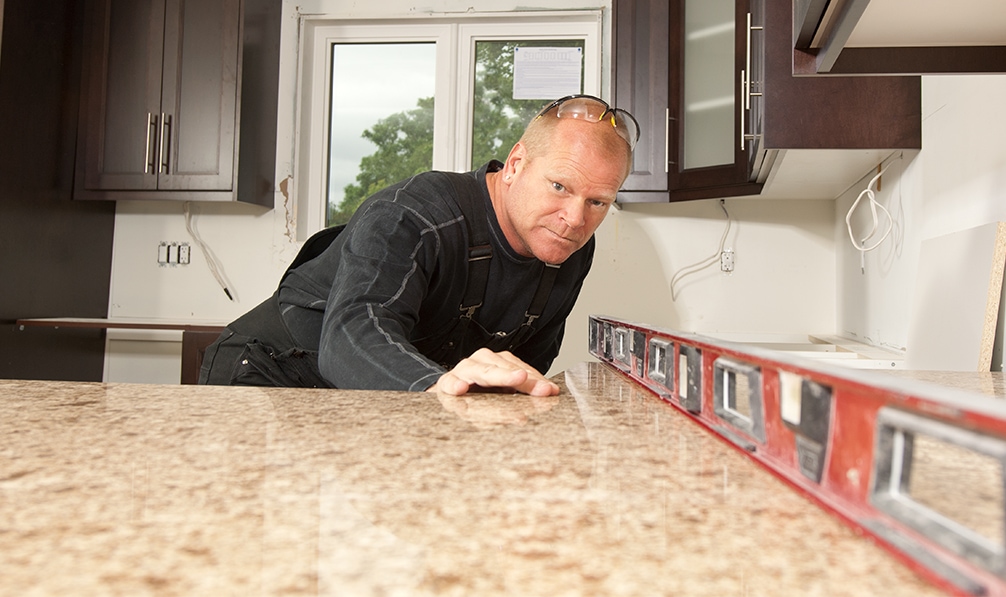
If you chose a granite or concrete countertop, chances are you will probably need to seal it. Discuss this with your contractor and ask what they would recommend.

CAULKING
Look carefully at the caulking that seals all seams and joints, where the countertop meets the wall or backsplash. The caulking should be neat and clean. If the caulking is missing, sloppy or messy, make your contractor aware. The best caulking for kitchens is one that is waterproof and mold and mildew resistant.
TIP FROM A PRO
Latex caulking can lead to mold!

PLUMBING
Check that all plumbing fixtures are secure and operate correctly. (Hot on the left, cold on the right.) Also, make sure drains and traps are in place and drain effectively, and the drainpipe is properly strapped and secured.

APPLIANCES
It’s important that you get familiar with your new kitchen appliances. If you don’t already know how to use them, review the manuals and keep them somewhere safe where you can easily access them. Have your contractor show you how to use the appliances properly before you start pushing any buttons. Ask them to show you the dishwasher hook-ups and that the drain line is connected before the trap.
Your contractor should also be able to show you how to properly care for your new appliances. Keep in mind; appliances that include a stainless steel finish will require some extra TLC, as they can only be cleaned using products specifically meant for stainless steel.
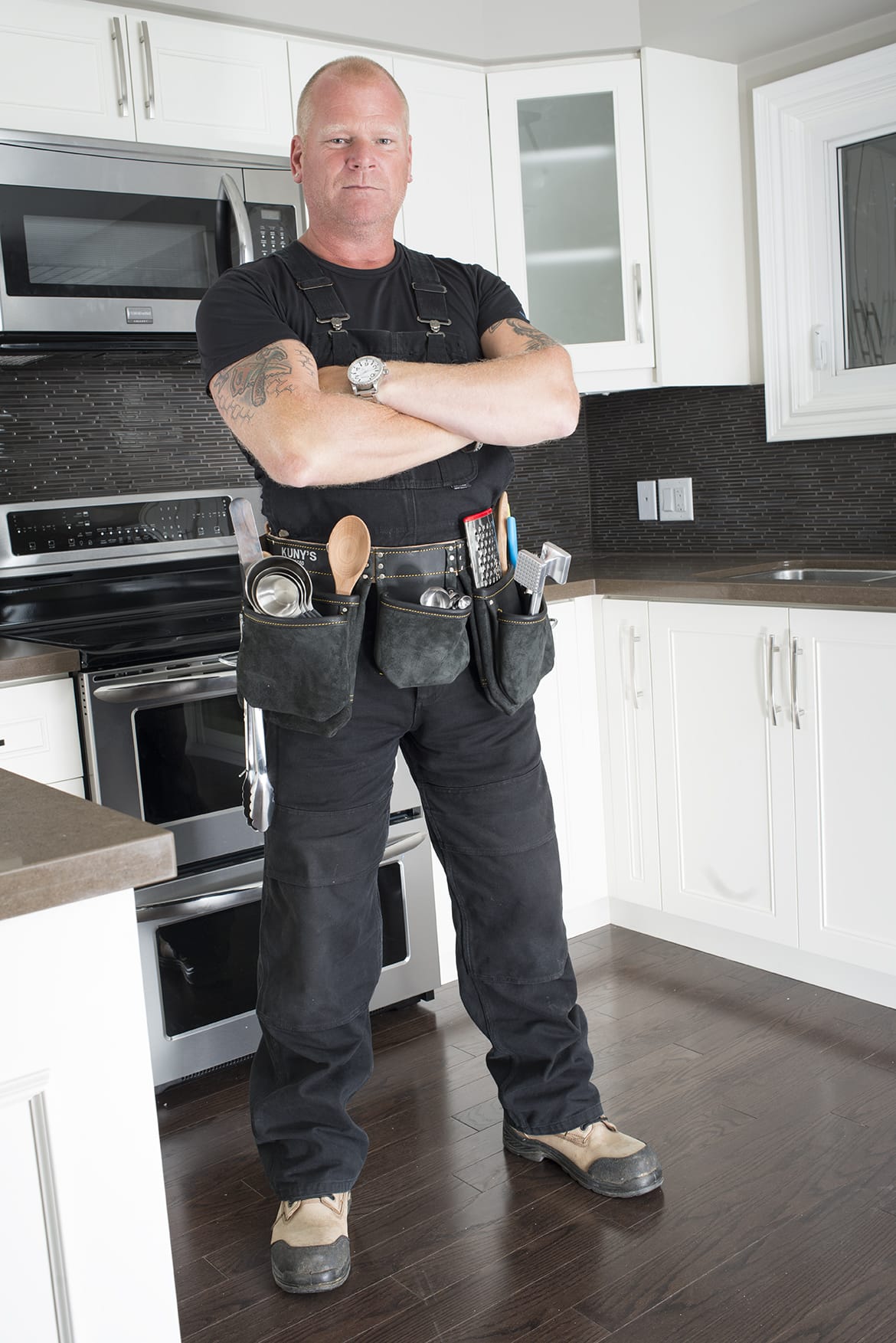
Always make sure there is no gas leak when getting a gas range installed.

OVEN
If a gas range was installed in your new kitchen, then your contractor should be able to show you that the hook up has been properly installed and that there are no chances of a gas leak. The connector that was installed should provide enough space for you to work between the stove and the wall if you were to have to pull the stove away from the wall.

TILES
You want to be sure that your tiles are flush, level, and even, whether they’re on your floor or backsplash. You want to avoid any tripping hazards, so look for lippage, which is when the edge of a tile is uneven and usually raised.
Focus on the grout lines; they should be symmetrical and evenly spaced. There should be no gaps or open spaces between the tiles that are not filled with grout.
All porous tiles (stone) are sealed, including the backsplash, but your grout is not. If it is, make sure your contractor used a breathable sealant, but no sealant on your grout is preferable.
Resolution
If you have any concerns during your walk-through, address them with your contractor right away, as soon as you see them. This post-renovation checklist will help guide you in the right direction. Remember, your contractor is there to answer any and all of your questions. In the end, you want to walk away happy and at ease, knowing that any concerns will be handled and taken care, so you can move and enjoy your dream kitchen.
